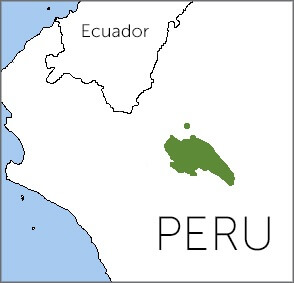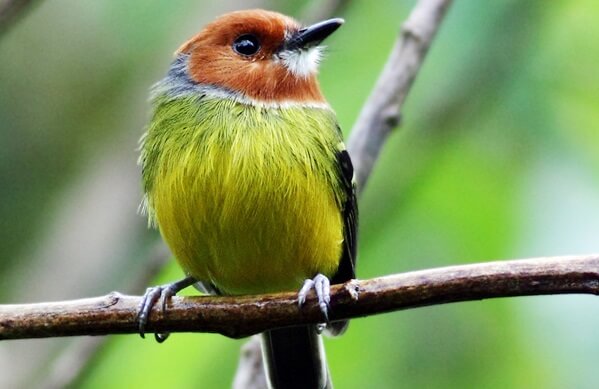 This species, also called Lulu's Tody-Flycatcher, is one of the more endangered members of its tribe, found only in a small area of northern Peru. The diminutive Johnson's Tody-Flycatcher — about the size of a kinglet — is part of an enormous family of birds known as tyrant flycatchers. This cohort of insect-eating birds includes more than 400 species, ranging from Santa Marta Bush-Tyrant and Olive-sided Flycatcher to Ochraceous Attila.
This species, also called Lulu's Tody-Flycatcher, is one of the more endangered members of its tribe, found only in a small area of northern Peru. The diminutive Johnson's Tody-Flycatcher — about the size of a kinglet — is part of an enormous family of birds known as tyrant flycatchers. This cohort of insect-eating birds includes more than 400 species, ranging from Santa Marta Bush-Tyrant and Olive-sided Flycatcher to Ochraceous Attila.
However, within this limited range, Johnson's Tody-Flycatcher can be easy to find. "This brightly-colored little bird is commonly seen, and its sputtering call heard, in early successional scrub near the parking area of Abra Patricia Reserve," says Daniel Lebbin, Vice President of International Programs at ABC.
Because of its very limited range and ongoing habitat loss, Johnson's Tody-Flycatcher is classified as Endangered by the International Union for Conservation of Nature (IUCN).
Bamboo Bird
Johnson's Tody-Flycatchers are found in highland cloud forests, where they're usually seen in pairs. They seem to prefer stands of bamboo and are often sighted in or near humid thickets of this plant.
The first Johnson's Tody-Flycatcher was collected by researchers in 1970, but the bird was not recognized as a new species until 2001. It was briefly known as Lulu's Tody-Tyrant, but following the death of Ned K. Johnson (one of the people who first described it), the bird's name was modified.
Like other tyrant-flycatchers, such as Streamer-tailed Tyrant and Antioquia Bristle-Tyrant, Johnson's Tody-Flycatcher feeds on a wide variety of insects. It forages low in the forest understory, bamboo thickets, or shrubbery, making short, quick flights upward to snatch prey from the undersides of leaves.
Sign up for ABC's eNews to learn how you can help protect birds

Johnson's Tody-Flycatcher by Jean Paul Perret
Expanding a Habitat Safety Net
In 2005, ABC supported Peruvian partner Asociación Ecosistemas Andinos (ECOAN) in creating the Abra Patricia Reserve, which protects more than 25,000 acres of montane forest in northern Peru. The site is identified by the Alliance for Zero Extinction (AZE) as a priority site for endangered birds such as Johnson's Tody-Flycatcher, Ochre-fronted Antpitta, and Long-whiskered Owlet.
Unfortunately, the area around Abra Patricia is still experiencing some of the fastest deforestation rates in Peru. A newly added highway has increased forest fragmentation in the area and allowed access for illegal activities such as logging and poaching.
ABC is currently campaigning to expand the Abra Patricia Reserve by 173 acres to increase protection for endemic, endangered birds such as Johnson's Tody-Flycatcher. Please consider donating to help us save even more habitat for these unique birds!
Donate to support ABC's conservation mission!



















































